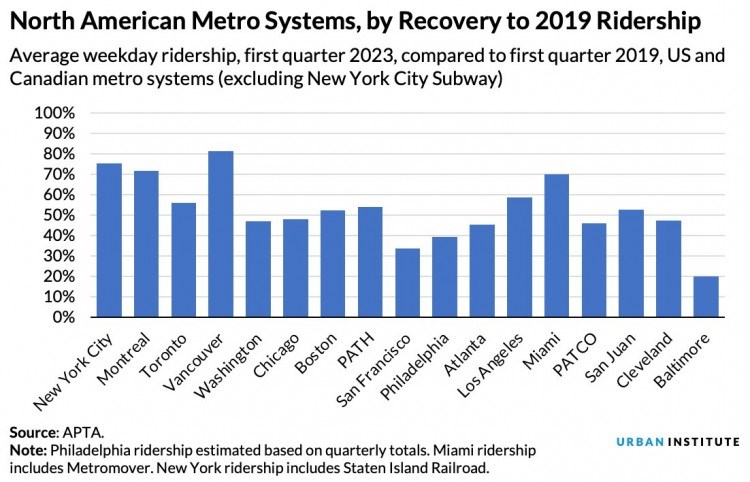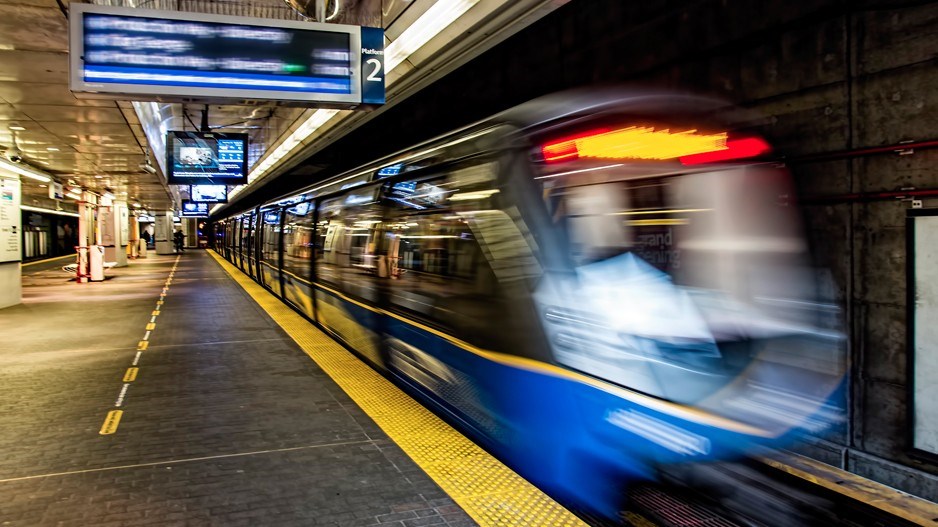Metro Vancouver's rapid-transit ridership has rebounded to be more than 80 per cent of what it was pre-pandemic, according to new research.
That rebound tops a list of all North American cities with rapid-transit systems, according to Urban Institute senior research associate Yonah Freemark, who compiled the information using American Public Transportation Association data.
He today tweeted out a table of the 17 cities that he told BIV have rapid-transit systems. Other cities, such as Calgary, which have light rail systems that sometimes operate on streets, were not included in this research, he said.
Freemark's research, which is not yet in an official report, focused on how each of the rapid-transit systems' riderships in the first three months of 2023 compares with riderships in the same quarter in 2019.
Vancouver topped the bunch, coming in at slightly more than an 80-per-cent recovery, his research shows.
New York City’s recovery appeared to be about 75 per cent, while Montreal’s was more than 70 per cent. Miami’s ridership rebound was also around 70 per cent.
In contrast, the worst performing city of the ones shown in the table was Balitimore, which has a transit-ridership recovery of about 20 per cent.
"It seems like the strategy of providing fully automated trains that run very frequently has paid off," Freemark said of Vancouver's SkyTrain system. "None of the other systems are fully automated."

TransLink’s monthly data, which compares overall ridership in 2023, including buses, to overall ridership in 2022, shows that ridership is up in every month so far this year for which data is available.
In January, for example, TransLink data show 30.58 million boardings. That’s 58.2 per cent more than the 19.32 million boardings in the same month in 2022.
About 27.72 million people boarded TransLink vehicles in February 2023 – nearly 30 per cent more than the 21.33 million people in the same month in 2022.
Boarding bumps in the next months for which data is available showed sizable increases:
- March: 25.8 per cent;
- April: 18.5 per cent; and
- May: 22 per cent.
The 33.83 million boardings in May 2023, which is the most recent month for which data is available, was higher than in any month in years.
TransLink's vice-president of transportation planning Sarah Ross told BIV in an interview that she has seen data for June that shows that ridership across the rapid-transit network and buses was 87 per cent of what it was in 2019.
South of the Fraser River, boardings are about 115 per cent of what they were pre-pandemic, she said.
She said she believes that one reason TransLink has been able to bounce back is that it did not lay off staff during the pandemic, and kept up its service level.
She cited population growth as another reason why Metro Vancouver's transit boardings are up.
Vancouver has a high office vacancy rate compared with pre-pandemic, but the vacancy rate pales with cities such as San Francisco.
“For big cities, Vancouver’s office-vacancy rate is among the lowest in North America,” GWL Realty Advisors’ vice-president of research and strategy, Wendy Waters told BIV in March.
The trend of a ridership rebound in Metro Vancouver has been around for a while.
In November 2022, Statistics Canada released data showing that countrywide, transit-service ridership was up to about 73.5 per cent of what it was pre-pandemic.




